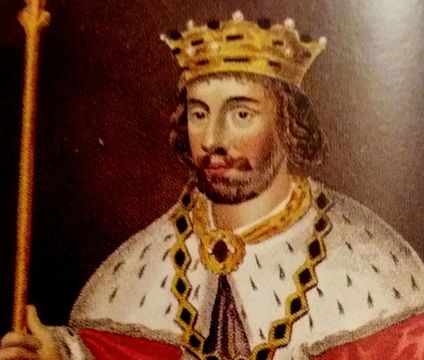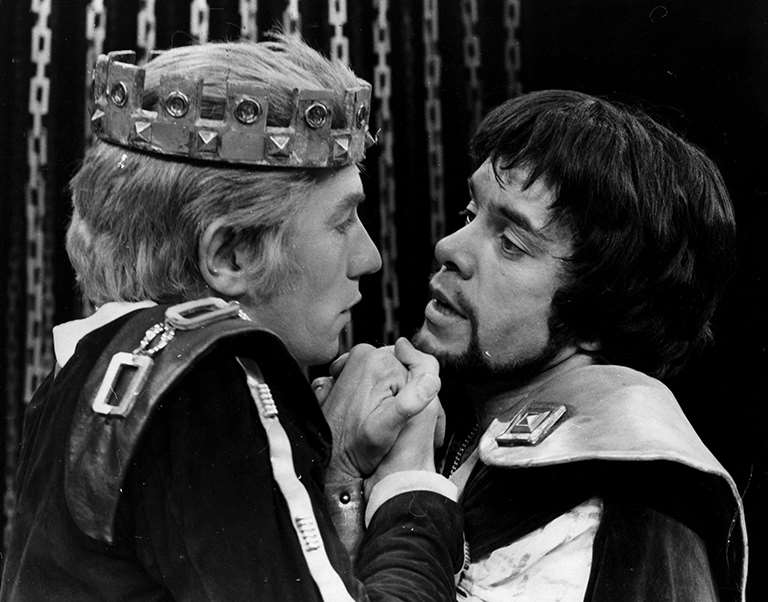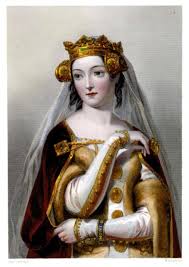
The King of England, Edward II.Carlisle Castle manuscript / Creative Commons
The relationship between King Edward II and Piers Gaveston is one of the most infamous ménage à trois in British royal history. Here's everything you need to know about the pair.
It was a rite of passages for monarchs to keep mistresses alongside their faithful wives. While queens were expected to stay faithful or virginal, kings were expected to appoint a royal mistress, to the point that the role of maîtresse-en-titre was an important position at court. The maîtresse-en-titre was expected to be educated, aristocratic and above all, female. So when King Edward II tried to treat his male lovers in the same way as female mistresses, there was a resistance.
Ian McKellen and James Laurenson perform a scene between Edward II and Piers Gaveston in a production of Christopher Marlowe’s play about the ill-fated king. Marlowe’s text is heavily suggestive of a romantic relationship between the two men
King Edward was married to Isabella of France and while historians are still divided on whether or not his relationship with Piers Gaveston was romantic, a strong relationship has been recorded.
The arrival of Piers Gaveston
Piers Gaveston first appears in the then Prince Edward’s household accounts in 1300, when Edward was 15 and Gaveston not much older. By 1306, the ageing King Edward I had banished Gaveston to France. Devastated to be apart from his favourite, the Prince lavished Gaveston with gifts and accompanied him to Dover to see him off. Quite why the King wanted to separate his son from Gaveston is unclear, but as soon as Edward I died in 1307, the two were reunited, whereupon Edward promptly made Gaveston Earl of Cornwall.
The closeness between the two men did not go unnoticed at the time. One chronicler recorded that, “upon looking on him [Gaveston] the son of the king immediately felt such love for him that he entered into a covenant of constancy, and bound himself with him before all other mortals with a bond of indissoluble love, firmly drawn up and fastened with a knot”
However, in order to secure succession after the death of his elder brother, Edward needed to marry, and so a political union was formed with Isabella of France. However, Gaveston was left in charge of the kingdom while Edward was preparing to marry in France, and embarrassed his bride and her family by ignoring Isabella throughout the wedding day.
Isabella of France
Gaveston was reunited with the King after his wedding, and the ‘Trokelowe’s chronicle’ notes that the King ran to Gaveston, showering him in kisses. The anonymous author of the ‘Vita Edwardi Secundi’ (1326) is a chronicle of Edward’s reign recalled: “I do not remember to have heard that one man so loved another… our king was incapable of moderate favour.”
The shame of Isabella of France
Such was the shame brought upon the new Queen that there is evidence to suggest that in 1308 her father, Philip the Fair, paid the earls of Lincoln and Pembroke to remove Gaveston from power.
Edward and Isabella did have a child eventually, and upon the birth of Edward III the court and barons insisted that Gaveston be exiled from all royal lands. Edward II eventually conceded and Gaveston fled to France.
However, the pair were not to be separated and when Edward II allowed Gaveston to return to England, the northern earls attacked, forcing the king, Gaveston and a heavily pregnant Isabella to flee the city. Gaveston was eventually captured and executed as a traitor in 1312.
Edward II was said to be distraught and swore revenge on those who had killed Gaveston. However, a war in Scotland soon distracted the king and he moved on, eventually finding a replacement lover in 1318 when Hugh Despenser arrived at court.
The death of King Edward II
Despenser unwisely made an enemy of Queen Isabella who then aligned herself with Roger Mortimer, a very powerful English baron and in 1326 led an uprising against Despenser. The annals of Newenham Abbey recorded that ‘the king and his husband’ fled to Wales, where they were captured soon after. Edward was forced to abdicate in favour of his son and was then imprisoned in Berkeley Castle. Despenser was hanged, drawn and quartered.
As for King Edward II, he was eventually killed in 1328, when his very presence was thought to present too much of a threat to the kingdom.
The final piece of slander
For years, rumours abound that Edward was killed after a red hot poker was inserted into his anus. While The ‘Holinshed’s Chronicles’ (1577) records that the murderers ‘put into his fundament [anus] an horne, and through the same they thrust up into his bodie an hot spit … the which passing up into his intrailes … burnt them’. Historians claim that this not the case, and simply a final act of slander.
* Originally published in Mar 2019.





Comments